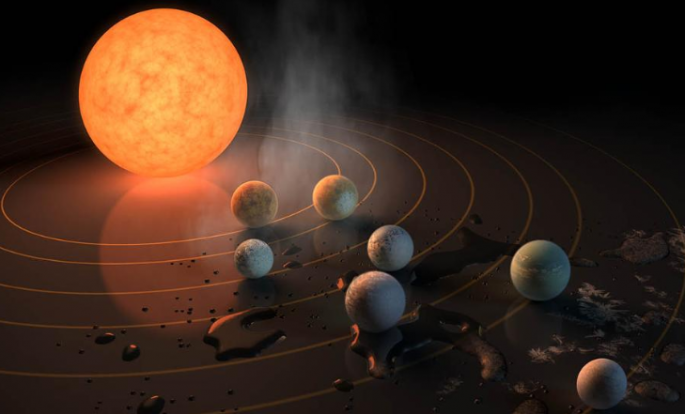NASA announced the findings on a discovery of the new exoplanets. These planets orbit around a red dwarf star named TRAPPIST-1. The seven planets are 40 light years away, which found in the approximate in terms of heft or mass and size or diameter similar to planet Earth.
Among of the seven, three of the planets are located in the "habitable zone" around TRAPPIST-1 star. Scientists believed that their calculations express the conditions might be right for liquid water to exist on the planets' surfaces. NASA will have follow-up investigations on this.
According to Vox, the seven new exoplanets are the new target for life searching. The system of these exoplanets might 235 trillion miles away from Earth but NASA thinks that these newly found planets potentially support water.
NASA offers possible scenarios on the positive side of the exoplanets habitability equation. Tom Barclay of NASA Ames Research Center in Moffett Field, California said that maybe the atmosphere could recover just fine and certainly scientist might see life on those planets in a capable of hibernating for extended periods of time, as per Digital Spy.
The space agency unleashed those future telescopes, like NASA's James Webb Space Telescope (JWST) will be launched in 2018 to solve the mystery by carefully analyzing the atmospheric gasses of the TRAPPIST-1 planets. Scientists are looking to discover water vapor and elements like the combination of oxygen and methane, which will bring the conclusion to the possible life-bearing world.
Victoria Meadows of the University of Washington said that there might be dense hydrogen envelopes to blast off on the seven exoplanets. Meadows added that cosmic radiation would potentially remove the hydrogen and make the seven planets to be potentially habitable.
Meadows mentioned that planets might form farther away from the star where there is more water or cooler temperatures and then move closer over time. The NASA astrobiologist said that majority of life could be more likely to be a single cell, which is relatively primitive life.



























